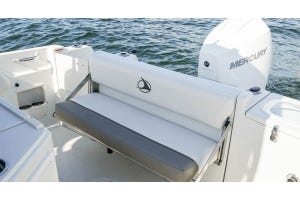
With certain parts exposed to the elements, your boat's gauges and their sensors can take a beating. If you suspect that your gauge is not giving you an accurate reading, we have some hints for how to figure out the problem and how to fix it.
Gauges have at least three terminals, and they're labeled.
Look for "SND" or "S" to locate the gauge's sender terminal; this connects the gauge to the sender, which is what measures the oil pressure, fuel level, or temperature. The "IGN" or "I" terminal connects the gauge to the boat's ignition, where the gauge receives its power. The terminal labeled "G" or "GND" is the ground for the gauge's lighting circuit. If your gauge has more than these three terminals, consult your owner's manual or get hold of the parts manufacturer to learn more.
Because fuel gauges' sending units float in the tank, and the tank sloshes around as the boat moves, your gauge might think the fuel level is rising and falling. However, sometimes a fuel gauge will read "full" when the tank is anything but.
Captain Wayne Canning has a good video that goes into a lot of technical detail about how to troubleshoot and test your boat's fuel gauge.










